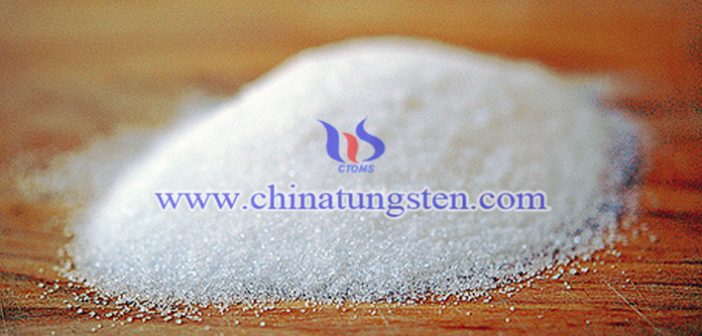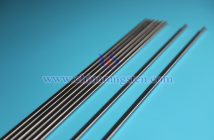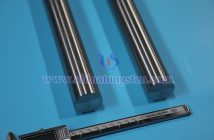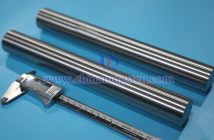The removal of molybdenum (Mo) impurities from sodium tungstate (Na?WO?) is a critical step in the purification process of tungsten chemicals, especially for producing high-purity tungsten products or intermediates such as APT (Ammonium Paratungstate) and AMT (Ammonium Metatungstate). Since both molybdenum and tungsten belong to Group VI B of the periodic table and exhibit similar chemical properties, their separation is particularly challenging. Below are commonly used methods and the principles behind them:
I. Forms of Molybdenum Impurities
In alkaline conditions, both tungsten and molybdenum exist in the form of polyoxoanions:
- Tungstate ion: WO?2?
- Molybdate ion: MoO?2?
Because of their similar structures in alkaline solutions, conventional separation is difficult and requires the use of redox reactions, potential differences, or differences in complex stability.
II. Common Removal Methods
- Sulfide Precipitation Method (H?S Precipitation Method)
- Principle: Molybdate ions react with H?S under acidic or neutral conditions to form insoluble MoS?, while tungstate ions remain soluble.
- Process Steps:
- Adjust the pH of the sodium tungstate solution to a weakly acidic range (pH 1.5–3.0);
- Introduce H?S gas;
- Mo forms a black precipitate (MoS?), which is filtered out;
- Tungstate remains in the supernatant.
- Advantages: Simple equipment and convenient operation.
- Disadvantages: Toxic H?S gas; sulfur-containing waste needs proper treatment.
- Solvent Extraction Method
- Principle: Organic extractants with selectivity for Mo complex with Mo to extract it into the organic phase, while W stays in the aqueous phase.
- Common Extractants:
- Oxo-phosphine compounds (e.g., TOPO)
- Organic phosphate esters (e.g., TBP)
- Trioctyl phosphate (TOP)
- Operating Conditions:
- Optimal pH range: 1.5–2.5
- Multistage extraction enhances separation efficiency.
- Advantages: High separation accuracy, suitable for continuous operation.
- Disadvantages: High cost; organic solvent recovery required.
- Reduction Method (Selective Reduction)
- Principle: Under controlled conditions, Mo is reduced to an insoluble lower-valence oxide (e.g., MoO?) and removed by precipitation, while W remains in a soluble, higher-valence form.
- Common Reductants:
- Metallic zinc powder
- Reducing organic compounds (e.g., sulfites, formaldehyde)
- Process Control:
- Typical temperature: 60–90°C
- Precise control of pH and reductant dosage is critical to avoid reducing W.
- Advantages: Thorough separation and low cost.
- Disadvantages: Complex process control; risk of introducing new impurities.
- Ion Exchange Method
- Principle: Separation based on the difference in affinity of Mo and W ions toward ion exchange resins under different pH conditions.
- Types of Resins:
- Strongly basic anion exchange resins
- Special chelating-type resins
- Control Conditions:
- Requires precise regulation of pH, temperature, and flow rate
- Typically suitable for small-scale, high-purity preparations
- Advantages: High product purity
- Disadvantages: Complex operation and high cost
- Calcium Salt Precipitation Method
- Principle: Under certain pH conditions, Mo forms insoluble CaMoO? precipitates while W remains soluble.
- Application: Limited separation precision; usually used as a preliminary pretreatment step or in combination with other methods.
III. Recommended Industrial Flow (Combined Methods)
- Adjust the pH of the alkaline sodium tungstate solution to 2–3;
- Introduce H?S gas or add sodium sulfide to precipitate Mo;
- Filter out MoS? precipitate;
- Perform solvent extraction for further Mo removal;
- Use ion exchange for final purification if necessary.
Summary and Comparison
| Method | Selectivity | Process Complexity | Cost | Industrial Applicability |
| Sulfide Precipitation | Medium-High | Low | Low | Common for coarse separation |
| Solvent Extraction | High | Medium | Medium-High | Suitable for large-scale operations |
| Reduction Method | High | Medium | Medium | Suitable for refining processes |
| Ion Exchange | Very High | High | High | For high-purity preparation |
| Calcium Precipitation | Low | Low | Low | Used in pretreatment |




